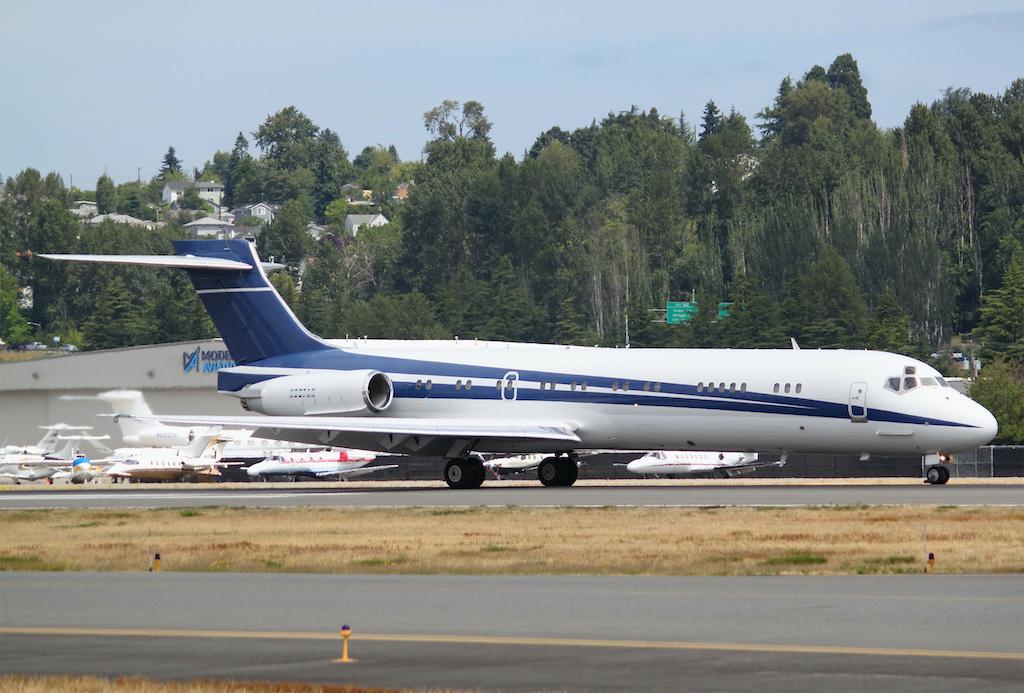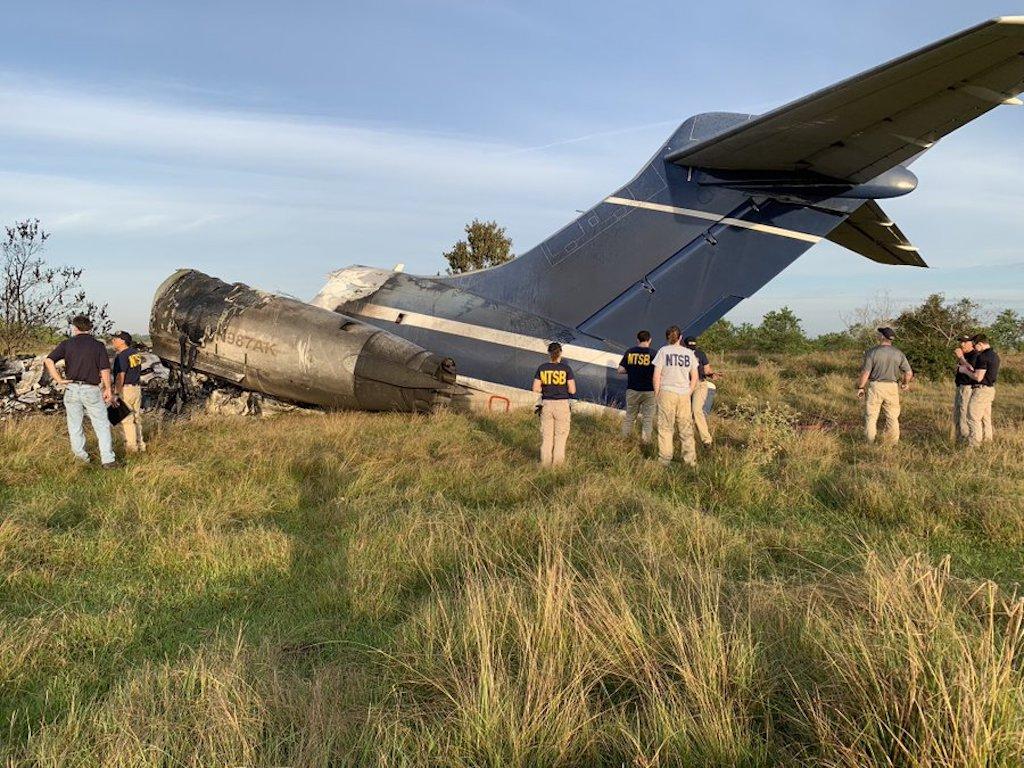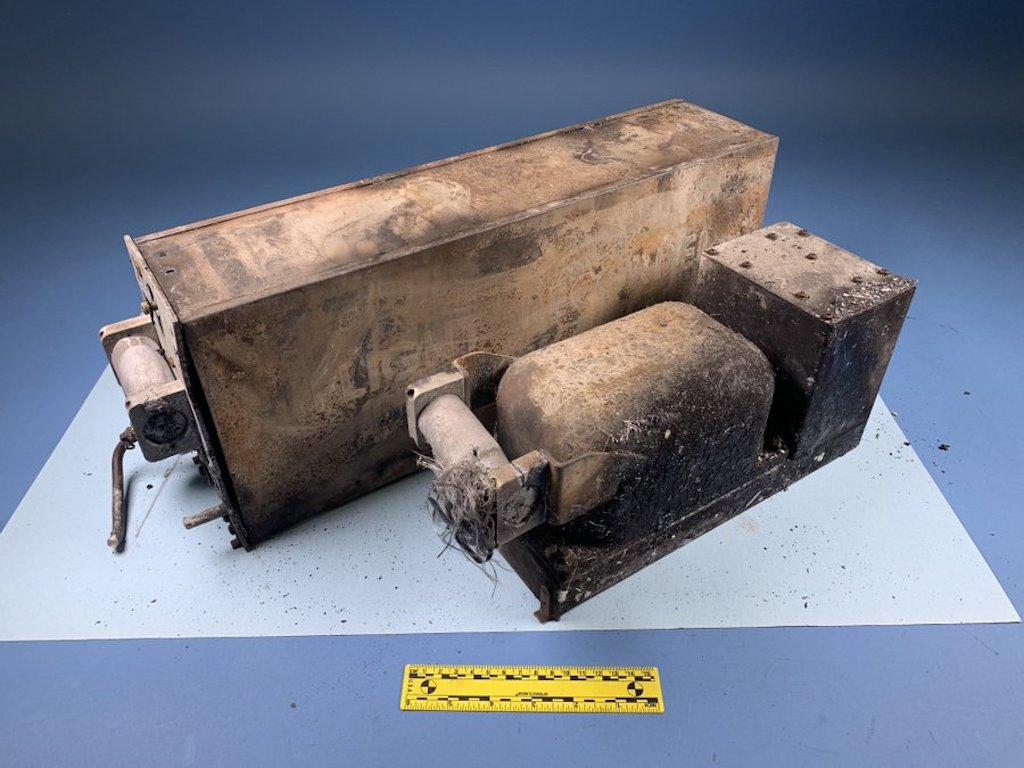
Investigators with the U.S. NTSB were analyzing data from flight recorders and looking into the maintenance history of a corporate McDonnell Douglas MD-87 that left the runway and caught fire in a nearby field while attempting to take off from Houston Executive Airport (KTME) in Texas on Oct. 19.
All 21 occupants—two pilots, a flight mechanic and 18 passengers—escaped after the jet exited the runway, struck a perimeter fence, crossed over a road and took down power lines before coming to rest in the field north of the airport. The flight mechanic opened the main cabin door in the front left of the aircraft “and we believe all aboard exited the main cabin door using the automatically inflated evacuation slide,” NTSB Board Member Michael Graham said Oct. 21.
The MD-87 was registered as N987AK to 987 Investments LLC, of Spring, Texas, and operated under the FAA’s Part 91 regulation for general aviation. The company’s owner, Houston-area developer James Alan Kent, was a passenger on the aircraft, which was destined to fly to Boston Logan International Airport, local media reported.
Tail Section Survived Fire

The twinjet was on its takeoff roll from Runway 36 when it left the paved surface of the runway at 10:08 a.m. local time. The left wing struck a row of trees before the aircraft came to its final resting spot, where the majority of the fire damage occurred, Graham said. The fire destroyed the front of the aircraft, leaving just the empennage intact.
Runway 18/36 at KTME measures 6,610 ft. long by 100 ft. wide. NTSB accident investigators documented 1,200 ft. of tire marks from the MD-87 on the runway surface.
“The marks indicate a hard-braking application and good tire contact with the runway surface,” said Graham, who briefed reporters at the front entrance of KTME. “All tires were in contact with the runway when the aircraft exited the runway surface. We have approximately 1,200 ft. of distinct tire marks from both main landing gears on the runway. The NTSB did not find any debris on the runway or in the grass prior to the aircraft impacting the perimeter fence.”
Investigators found six distinct tire impressions in the grass leading to the perimeter fence, made by the aircraft’s tricycle-type main gear and nose gear—each with two tires. At a point beyond the perimeter fence and road, the left wing hit trees “and that’s where we [found] a debris field and distinguishable fire marks starting at that point,” Graham said.
The jet’s Pratt & Whitney JT8D-219 engines, mounted high on the rear fuselage of the aircraft, remained “in great shape for what they went through,” with limited damage, Graham said. “Our team of powerplant experts is very happy with the condition, and they are getting information from them as they continue to work,” he added.
CVR/FDR Undergoing Analysis

Investigators recovered the aircraft’s cockpit voice recorder (CVR) and flight-data recorder (FDR), which were sent to the NTSB’s recorder laboratory in Washington. Both appeared to be in good condition. The FDR is an older-style device that used magnetic tape as the recording media; preliminary review indicated the tape media did not suffer heat damage, Graham said. The safety board is also examining video that appeared to show a puff of smoke emitted by one of the engines during the aircraft’s takeoff roll.
Designed to carry up to 130 airline passengers, the MD-87 can be configured with an executive interior seating 19 to 30 passengers. Its normal range of 2,500 nm can be extended to 4,200 nm with installation of auxiliary fuel tanks.
The accident MD-87 was manufactured in 1987 and delivered in January 1988 to Finnair. It later served with Aeromexico before being placed in storage, according to Aviation Safety Network. Kent’s 987 Investments acquired the aircraft in 2015.
The runway excursion on Oct. 19 was the jet’s first flight since December 2020. Graham said the NTSB is looking into the maintenance history of the aircraft and the maintenance performed on the MD-87 since its previous flight.
The NTSB since 2016 has recommended that Part 135 charter operators implement safety management systems (SMS), and earlier this year it adopted an investigative report that recommends SMS systems for passenger-carrying Part 91 operations such as air tours, parachute jumps, historic aircraft experience flights and sightseeing balloon trips.
The FAA has required that Part 121 airlines establish SMS practices across their organizations since 2018. The agency is developing a new regulation that would mandate SMS implementation by other organizations, including Part 135 operators and Part 145 repair stations; it expects to release a notice of proposed rulemaking by September 2022.






Comments
Airplanes need lots of maintenance and exercise. Fuel tanks will accumulate water if not topped off and drained fastidiously. Pilots need training and practice in the plane they will be flying. Those are just basic ingredients for a safe, happy takeoff and landing. Please read the first sentence again for your answer to this unhappy ending.